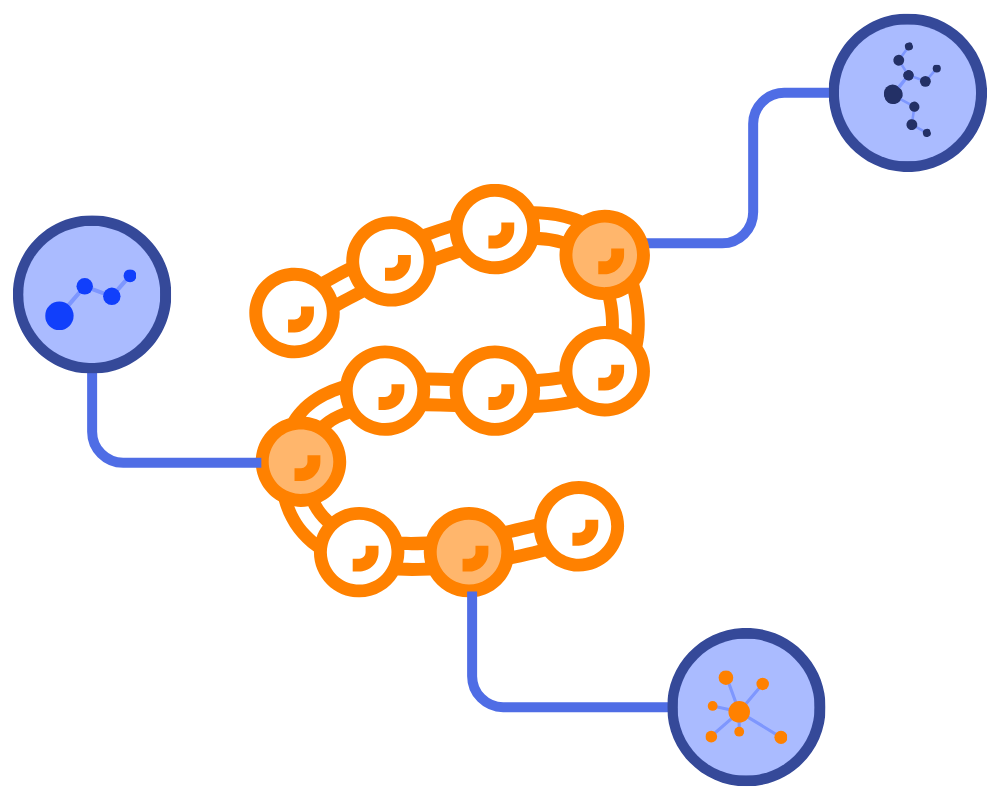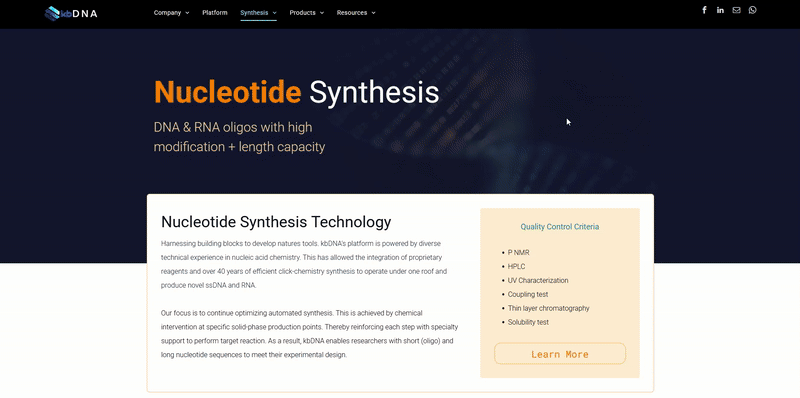A Guide to Protein Characterization
Abstract:
In Welcome to our in-depth exploration of Protein Characterization, a critical aspect of bio-pharmaceutical research. In this article, we aim to demystify the complex world of protein characterization, answering key questions while delving into methods, parameters, applications, and emerging trends. Join us on this journey to understand why protein characterization is pivotal in the realms of academia, research, clinical settings, and the pharmaceutical and food industries.
Introduction: What is Protein Characterization?
- What is Protein Characterization?: At its core, protein characterization involves deciphering the intricate details of proteins, from their primary structure to their functions. This article serves as a guide to unraveling the various aspects of this crucial process.
- Why is Protein Characterization Important?: Protein characterization is the linchpin of bio-pharmaceutical research, offering insights into a protein's structure, function, and interactions. Understanding these aspects is vital for developing new drugs, diagnosing diseases, and ensuring the safety and efficacy of therapeutic proteins.
- Different Approaches to Protein Characterization: Protein characterization employs a myriad of approaches, each offering unique insights. From chromatographic and electrophoretic methods to spectroscopic and mass spectrometric techniques, researchers have a diverse toolkit at their disposal.
- Applications of Protein Characterization:
The impact of protein characterization extends across various domains. It plays a pivotal role in research laboratories, clinical settings, the pharmaceutical industry, and even the food industry, where understanding protein structures influences product development.

Protein Characterization Methods:
- Employing a mix of characterization methods is essential for a nuanced grasp of a protein's structure and function. By combining techniques like mass spectrometry, spectroscopy, chromatography, and electrophoresis, researchers gain precision, overcome limitations, and extract complementary information. This strategic integration ensures a holistic understanding, emphasizing the importance of a multifaceted approach to protein characterization:
- Chromatographic Methods: Chromatography separates proteins based on their physicochemical properties, enabling precise analysis and purification.
- Electrophoretic Methods: Electrophoresis leverages the movement of charged particles in an electric field to separate proteins based on size and charge.
- Spectroscopic Methods: Techniques like UV-Visible and Infrared spectroscopy provide valuable information about a protein's structure and composition.
- Mass Spectrometric Methods: Mass spectrometry offers high precision in determining a protein's mass, sequence, and post-translational modifications
- Other Methods: X-ray crystallography and NMR spectroscopy provide detailed insights into protein structures, contributing to our understanding of their functions.
Protein Characterization Parameters:
Protein characterization parameters encompass vital elements like primary and secondary structure, tertiary arrangements, and post-translational modifications. These serve as the blueprint for understanding a protein's identity, function, and interactions. Deciphering these parameters is crucial for tailoring research and applications, providing a foundational understanding of proteins in diverse contexts.
- Primary Structure: Primary structure refers to the linear sequence of amino acids within a protein, acting as its genetic blueprint. Understanding this sequence is paramount for unraveling the unique identity of a protein and forming the basis for comprehensive characterization.
- Secondary Structure: Secondary structure delves into the local folding patterns of a protein, including alpha-helices and beta-sheets. This parameter is pivotal in protein characterization, offering insights into structural elements that influence stability and function.
- Tertiary Structure: Tertiary structure explores the three-dimensional arrangement of a protein's secondary structures. This aspect of protein characterization provides critical insights into the overall shape and functional attributes, elucidating how individual components contribute to the protein's biological role.
- Quaternary Structure: Quaternary structure examines how multiple protein subunits come together to form a functional, multimeric complex. Understanding this level of organization is crucial for deciphering collaborative dynamics among proteins and their collective impact on cellular processes.
- Post-translational Modifications: Post-translational modifications encompass alterations occurring after protein synthesis, such as phosphorylation or glycosylation. Crucial for protein characterization, these modifications significantly influence a protein's activity, stability, and cellular localization.
- Protein-Protein and Protein-Ligand Interactions: Protein-Protein and Protein-Ligand interactions delve into the nuanced relationships proteins share with each other or with ligands. Studying these interactions is fundamental in understanding the intricate functions of proteins, guiding insights into cellular processes and potential therapeutic targets.
- Protein Stability and Activity: Protein Stability and Activity involve comprehending the factors influencing a protein's robustness and functional capabilities. Essential for protein characterization, assessments in this domain guide researchers in optimizing conditions for protein functionality, impacting applications in drug development and biotechnological processes.
Protein Characterization in Different Contexts:
- Research Laboratory: In the research laboratory, protein characterization is the cornerstone of scientific exploration, guiding researchers in understanding the molecular intricacies of proteins. It plays a pivotal role in advancing knowledge, fueling breakthroughs, and laying the groundwork for innovative discoveries across various scientific disciplines.
- Clinical Laboratory: In the clinical laboratory, protein characterization is instrumental in diagnosing diseases and developing personalized treatment strategies. By scrutinizing proteins at the molecular level, clinicians can tailor therapies to individual patients, enhancing precision medicine approaches.
- Pharmaceutical Industry: In the pharmaceutical industry, protein characterization is integral to every stage of drug development, ensuring the safety and efficacy of therapeutic proteins. From target identification to quality control, detailed insights into protein structures guide the creation of effective and safe pharmaceutical interventions.
- Food Industry: In the food industry, understanding protein structures through characterization is pivotal for developing innovative and nutritious products. Protein characterization informs the formulation of food products, ensuring their quality, functionality, and nutritional value meet consumer expectations.
Emerging Trends in Protein Characterization:
The field is evolving with more sensitive protein characterization methods, enhancing our ability to explore proteins' structural and functional intricacies, opening avenues for breakthroughs in various scientific and medical applications:
- Development of New and More Sensitive Protein Characterization Methods: Technological progress has yielded highly precise protein characterization methods, enabling detailed analysis and providing new insights into complex biological processes.
- Use of Machine Learning for Protein Characterization Data Analysis: Machine learning is revolutionizing protein characterization data analysis, enhancing efficiency and accuracy by uncovering patterns and insights within complex datasets.
- Application of Protein Characterization to New Areas such as Single-Cell Proteomics and Spatial Proteomics: Protein characterization is expanding into innovative areas, such as single-cell proteomics and spatial proteomics, offering detailed analysis at the individual cell or spatial levels for insights crucial in personalized medicine and understanding complex biological systems.
Summary:
In this guide, we've delved into the essential aspects of protein characterization, from deciphering primary structures to exploring emerging trends like highly sensitive methods and machine learning integration. Emphasizing its pivotal role in various contexts, including research, clinical applications, pharmaceuticals, and the food industry, this guide underscores the necessity of a versatile and comprehensive approach. Whether unraveling intricate protein structures or staying ahead with the latest trends, this guide serves as an invitation for researchers to harness the power of protein characterization for groundbreaking discoveries in the dynamic landscape of bio-pharmaceutical research.
For expert assistance in protein characterization services tailored to your research needs, contact us today. Let's push the boundaries of scientific exploration together.















